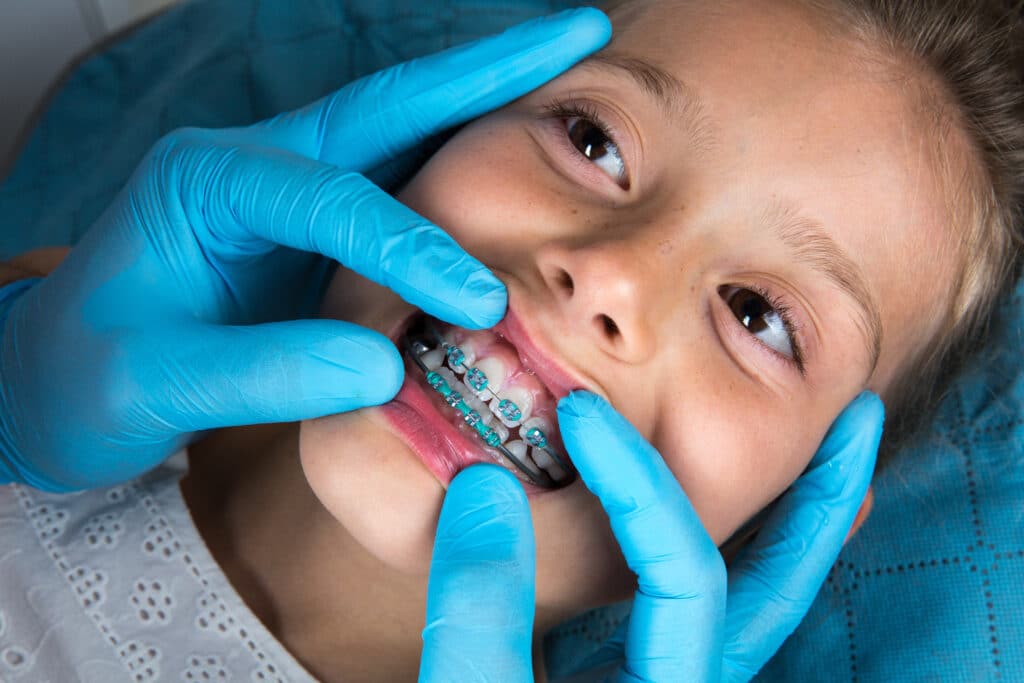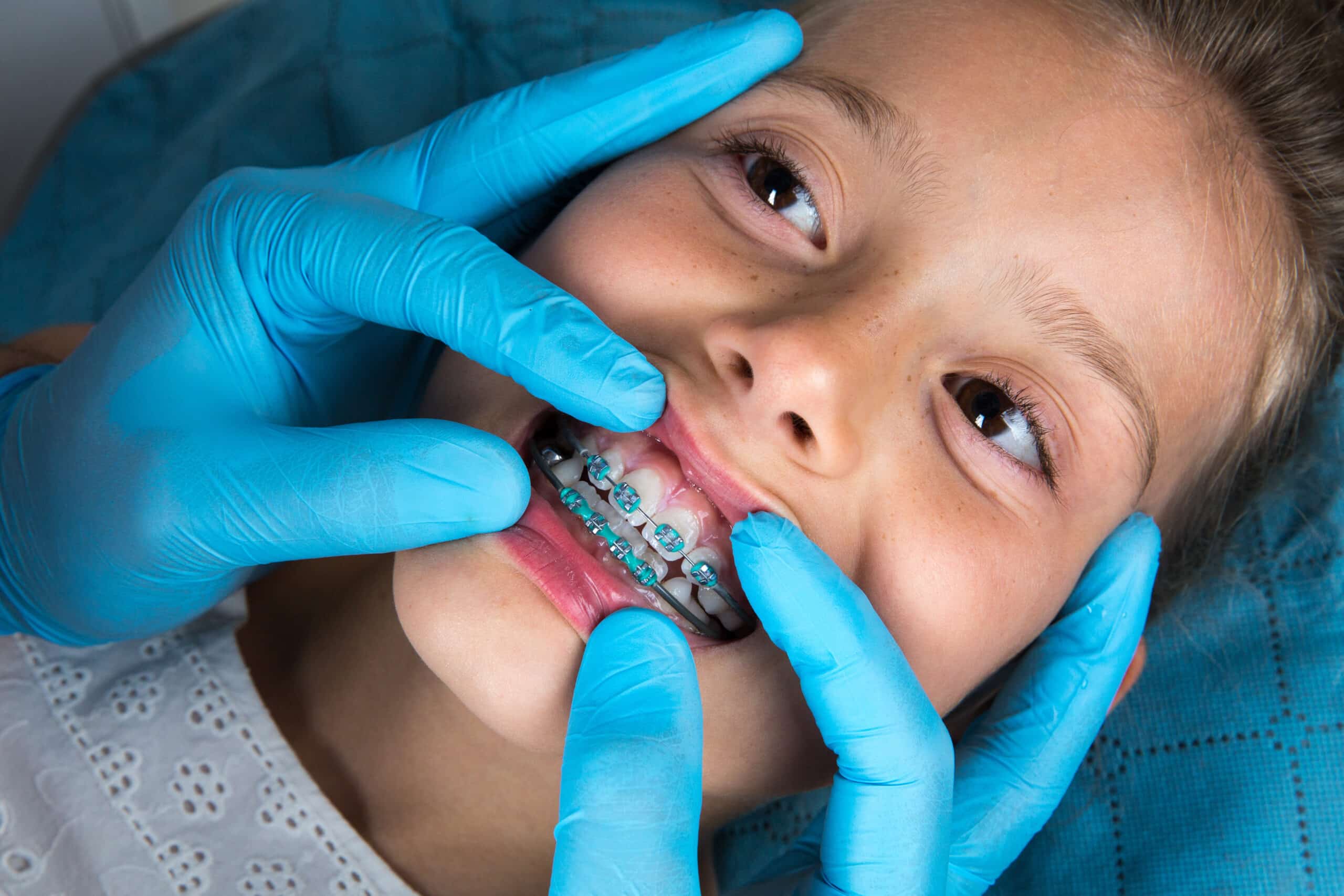Children’s Orthodontist: The Benefits of Early Orthodontic Treatment for Children

A children’s orthodontist is a specialised dental professional who focuses on diagnosing, preventing, and treating orthodontic problems in younger patients. They have additional training and experience in working with children and are well-versed in the unique needs and challenges of their young patients.
The Benefits of Seeing a Children’s Orthodontist
Seeing a children’s orthodontist offers several benefits for young patients. Here are some key advantages:
- Early detection and intervention: Children’s orthodontists can identify orthodontic issues at an early stage, even before all the adult teeth have emerged. Early treatment can prevent problems from worsening and potentially reduce the need for more extensive interventions later on.
- Correcting dental problems: Orthodontic treatment can address a variety of dental issues in children, such as overcrowding, misaligned bites, protruding teeth, and jaw growth irregularities. By correcting these problems, children can enjoy better oral health, improved aesthetics, and enhanced self-confidence.
- Optimising facial development: Orthodontic treatment in childhood can guide the growth and development of the face and jaw, helping to create a harmonious balance between the teeth, lips, and jaws. This can lead to improved facial aesthetics and better overall oral function.
- Preventing future complications: Addressing orthodontic problems early on can help prevent potential complications in the future, such as speech difficulties, excessive wear on teeth, and temporomandibular joint (TMJ) disorders.
Common Procedures Performed by Children’s Orthodontists
Children’s orthodontists offer a range of treatments to address orthodontic issues. Some common procedures include:
- Traditional fixed braces: These are the most common orthodontic appliances, consisting of brackets bonded to the teeth and connected by archwires. They apply gentle pressure to gradually move the teeth into their correct positions.
- Removable aligners: Clear aligners, such as Invisalign Teen, are custom-made, virtually invisible trays that fit over the teeth. They are removable for eating, brushing, and flossing, making them a convenient option for some children.
- Fixed retainers: After orthodontic treatment, children may require fixed retainers, which are small wires bonded to the back of the teeth to maintain their new positions.
When Should You Take Your Child to a Children’s Orthodontist?
It is recommended to take your child for an initial consultation with a children’s orthodontist by the age of seven. At this age, most children have a mix of adult and baby teeth, and orthodontists can assess their dental development and identify any potential issues.
If you notice any concerning signs earlier, such as difficulty biting or chewing, thumb sucking beyond the age of five, or overcrowded or protruding teeth, it is advisable to schedule an appointment with a children’s orthodontist even earlier.
Why early Orthodontic Treatment is recommended for children
Early orthodontic treatment addresses common issues like crooked teeth, crowded teeth, and misaligned upper and lower teeth. An expert children’s orthodontist at our Fulham Road clinic will create tailored plans for your ongoing child’s dental health.
Treatments such as children’s braces help to guide jaw growth and correct alignment, preventing more severe problems later in life. Whether fixing crooked teeth or aligning the upper teeth, early care from an experienced orthodontist can transform your child’s smile.
What to Expect During a Children’s Orthodontist Visit
During the first visit to a children’s orthodontist, the focus will be on evaluating your child’s dental development and identifying any orthodontic problems. The orthodontist will perform a thorough examination, which may include X-rays, photographs, and impressions of your child’s teeth.
Based on the assessment, the orthodontist will discuss their findings with you, explain the recommended treatment options, and answer any questions or concerns you may have. They will outline the treatment plan, including the estimated duration and any necessary preparatory steps.
The Cost of Seeing a Children’s Orthodontist
The cost of seeing a children’s orthodontist can vary depending on several factors, including the complexity of the orthodontic problem, the type of treatment recommended, the region or country, and whether the treatment is provided by a specialist orthodontist or a general dentist.
Private orthodontic treatment tends to be more expensive than public or insurance-covered options. It is important to check with your orthodontist’s office about their fees, payment options, and any potential insurance coverage or financing plans that may be available.
How to Choose the Right Children’s Orthodontist
When selecting a children’s orthodontist, consider the following factors:
- Qualifications and experience: Ensure that the orthodontist is a specialist in orthodontics and has relevant experience treating children. Look for certifications, qualifications, and positive reviews from other parents.
- Personal rapport: It is important that your child feels comfortable and at ease with the orthodontist and their staff. A friendly and supportive environment can make the treatment experience more pleasant for your child.
- Treatment options: Inquire about the available treatment options and technologies offered by the orthodontist. Different techniques may be suitable for different cases, and it is beneficial to choose an orthodontist who can provide the most appropriate treatment for your child’s needs.
- Accessibility and convenience: Consider the location and office hours of the orthodontist. Choose a practice that is easily accessible and offers appointment times that work well with your child’s schedule.
The Risks of Orthodontic Treatment for Children
While orthodontic treatment is generally safe and effective, there are some risks and potential complications to be aware of. These can include:
- Discomfort and soreness: Your child may experience some discomfort or soreness during the initial stages of treatment or after adjustments. This can be managed with over-the-counter pain relievers and typically subsides within a few days.
- Soft tissue irritation: The brackets and wires of braces can occasionally cause irritation or sores on the gums, cheeks, or lips. Orthodontists can provide relief wax or suggest other methods to alleviate discomfort.
- Oral hygiene challenges: Proper oral hygiene is crucial during orthodontic treatment, as braces can make it more challenging to clean the teeth effectively. Encourage your child to maintain good brushing and flossing habits and consider additional oral hygiene aids, such as interdental brushes or water flossers.
- Allergic reactions: In rare cases, some individuals may have an allergic reaction to certain orthodontic materials, such as nickel in braces. Inform your orthodontist if your child has known allergies, so they can select suitable materials.
Tips for Making Your Child’s Orthodontic Treatment Successful
Here are some tips to help make your child’s orthodontic treatment successful:
- Encourage good oral hygiene: Emphasise the importance of maintaining excellent oral hygiene throughout the treatment. Ensure your child brushes their teeth thoroughly, flosses daily, and attends regular dental check-ups.
- Follow the orthodontist’s instructions: Ensure that your child follows the orthodontist’s instructions regarding wearing appliances, elastics, or retainers. Compliance with the treatment plan is essential for achieving optimal results.
- Promote a healthy diet: Encourage your child to eat a balanced diet that is gentle on their braces. Minimise sticky or hard foods that could damage the appliances and follow any dietary recommendations provided by the orthodontist.
- Support and motivate your child: Orthodontic treatment can sometimes be challenging or uncomfortable. Offer encouragement and reassurance to your child, emphasizing the long-term benefits and the progress they are making.
FAQs About Children’s Orthodontists
Will my child need braces?
Not all children require braces. An orthodontic evaluation will help determine whether your child needs braces or other orthodontic treatment. The orthodontist will assess your child’s dental development, bite alignment, and any potential issues. Based on their evaluation, they will recommend the appropriate treatment, which may or may not include braces.
How long does orthodontic treatment typically last for children?
The duration of orthodontic treatment varies depending on the complexity of the case and the type of treatment needed. On average, children’s orthodontic treatment can last anywhere from several months to a few years. The orthodontist will provide an estimated treatment timeline during the initial consultation and will monitor your child’s progress throughout the treatment.
Can my child participate in sports or play musical instruments while wearing braces?
Yes, your child can still participate in sports and play musical instruments while wearing braces. It is advisable to wear a mouthguard during sports activities to protect the braces and teeth from potential injuries. For playing musical instruments, your child may require a short adjustment period to get used to the braces, but they should be able to continue their musical pursuits with practice and patience.
Can orthodontic treatment be done by a general dentist?
While general dentists can provide some orthodontic treatments, it is recommended to seek treatment from a specialist orthodontist, especially for more complex cases. Specialist orthodontists have undergone additional training and have extensive experience in diagnosing and treating orthodontic issues. They possess the expertise to develop comprehensive treatment plans and monitor the progress of the treatment effectively.
Will my child need to wear retainers after orthodontic treatment?
Yes, wearing retainers after orthodontic treatment is crucial to maintain the new position of your child’s teeth. Retainers help stabilise the teeth and prevent them from shifting back to their original positions. The orthodontist will provide specific instructions on how often and for how long your child should wear retainers to ensure long-term success.
What if my child has dental anxiety or is nervous about orthodontic treatment?
It is not uncommon for children to experience dental anxiety or nervousness about orthodontic treatment. Children’s orthodontists are trained to work with young patients and provide a supportive and comforting environment. They can explain the treatment process in a child-friendly manner, address any concerns, and help alleviate anxiety. If your child’s anxiety persists, the orthodontist may recommend techniques or options to help manage their anxiety, such as sedation dentistry or relaxation techniques.
Remember that each child’s orthodontic journey is unique, and it’s important to consult with a children’s orthodontist to determine the best course of action for your child. They can provide personalised recommendations and guide you through the entire treatment process, ensuring the best possible outcome for your child’s oral health and smile.
